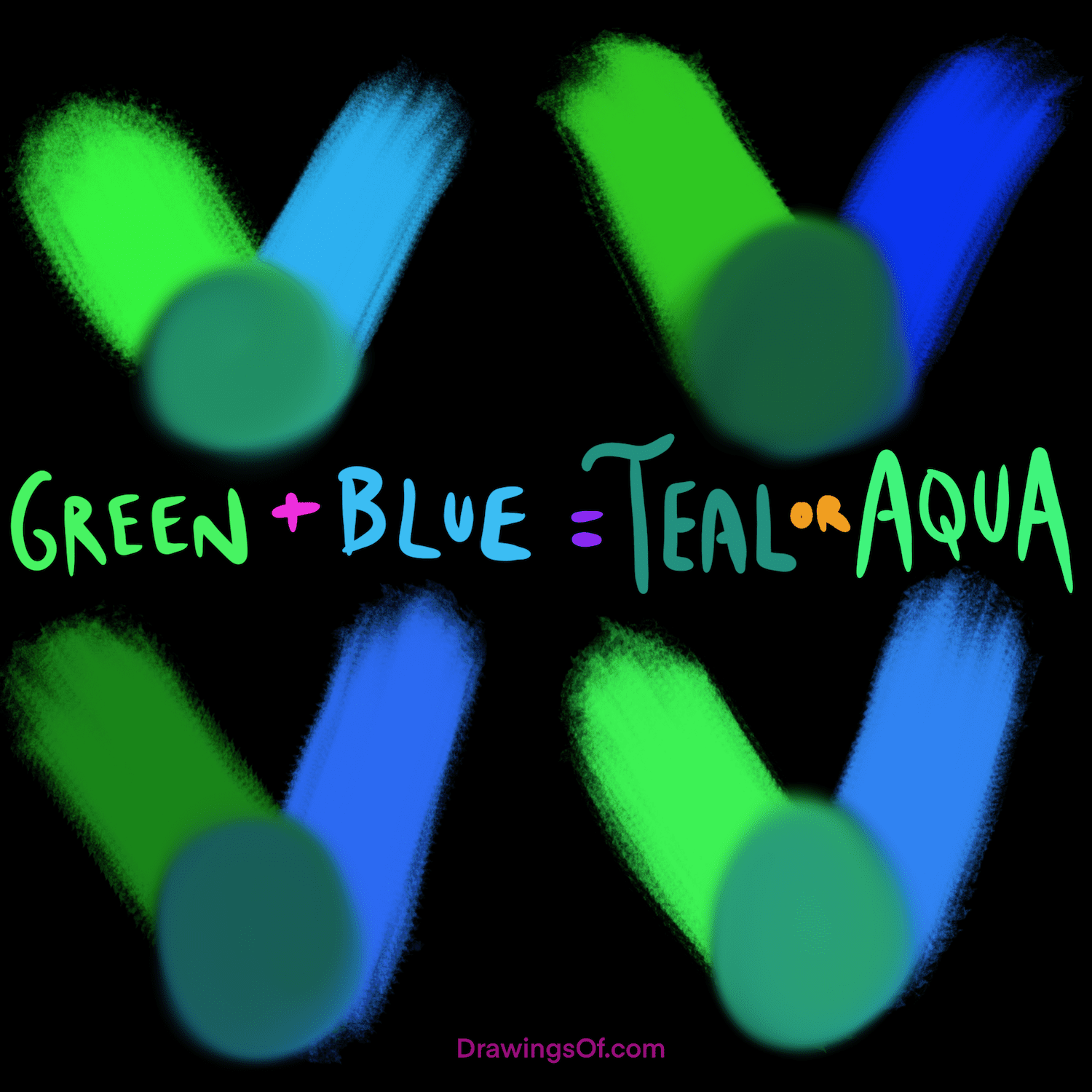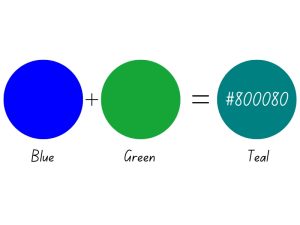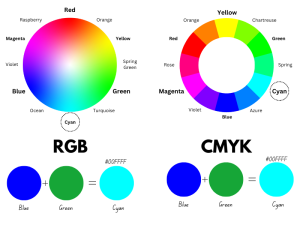Unveiling The Mystery: What Color Do Blue And Green Make?
The world of colors is a fascinating realm, full of vibrant hues and endless possibilities. From the striking boldness of primary colors to the subtle elegance of tertiary shades, every mix holds a unique surprise. For artists, designers, and curious minds alike, understanding how colors interact is key to unlocking creative potential. Today, we're diving into a common question that often sparks curiosity: what color do blue and green make?
At first glance, it might seem straightforward, but like many aspects of color theory, there's more to it than meets the eye. While the direct answer might be simple, the underlying principles and the beautiful variations that emerge offer a deeper appreciation for the art and science of color mixing. Let's explore the captivating result of combining these two cool, calming colors.
The Direct Answer: Blue-Green and Teal
When you mix blue and green together, the resulting color is known as blue-green or teal. This isn't a completely new color on the spectrum, but rather an intermediate shade that sits comfortably between its two parent colors. Imagine the vastness of the ocean meeting the lushness of a forest – that's the essence of blue-green.
The exact shade of blue-green or teal you achieve will largely depend on the proportions of blue and green you use. If you add more blue, the resulting color will lean towards a deeper, more oceanic blue-green. Conversely, if you incorporate more green, the shade will appear greener, reminiscent of jade or emerald. This versatility makes blue-green and teal incredibly popular in various fields, from interior design to fashion, evoking feelings of serenity, sophistication, and a connection to nature.
These colors are often associated with tranquility and balance. Teal, in particular, is a rich, medium to dark blue-green color that is often described as a darker cyan. It's a color that can be both calming and invigorating, making it a versatile choice for many applications.
A Dive into Color Theory: Understanding the Basics
To truly appreciate why blue and green create blue-green, it's helpful to revisit the fundamentals of color theory. Understanding the building blocks of color helps demystify the mixing process.
Primary Colors: The Building Blocks
The foundation of all colors lies in the primary colors. These are the fundamental hues that cannot be created by mixing other colors. In traditional subtractive color theory (which applies to paints, pigments, and dyes), the three primary colors are:
- Red
- Blue
- Yellow
These three colors are the original colors from which all other colors can be derived. When you mix these three primary colors together, you typically get some form of brown or a very dark, almost black, shade, depending on the exact pigments and proportions. As the data suggests, "if you mix the those 3 colors, the color would be brown." And more generally, "When you mix any of the colors together they make brown. A different shade of brown depending on the colors you mix."
Secondary Colors: Born from Primaries
Secondary colors are created by mixing two primary colors in equal proportions. These include:
- Orange: Made by mixing Red and Yellow.
- Purple: Made by mixing Red and Blue. As the data confirms, "red and blue make purple."
- Green: Made by mixing Blue and Yellow. The data explicitly states, "Blue and yellow make green." It also notes, "Green is a secondary colour. (1 part blue and 1 part yellow)." This is a crucial point, as it highlights that green itself is a product of primary colors.
The reason blue and yellow make green, particularly in the context of light and objects, is fascinating. When light hits an object, certain colors are absorbed while others are reflected. "Blue and yellow light wavelengths are absorbed by certain" pigments in a way that only green light is reflected back to our eyes, making us perceive the color green.
Tertiary Colors: The Next Level of Mixing
Tertiary colors are formed by mixing a primary color with a secondary color. Blue-green, our focus color, falls into this category. It's a primary color (blue) mixed with a secondary color (green). Other examples include yellow-orange, red-orange, blue-purple, red-purple, and yellow-green. These colors offer an even wider spectrum of shades and allow for more nuanced color palettes.
Beyond the Basics: Nuances in Color Mixing
While the fundamental rules of color mixing provide a solid framework, the real-world application often involves more subtle considerations. The outcome of mixing colors isn't always a rigid formula; it's influenced by several factors.
The Impact of Proportion
As mentioned earlier, the exact shade of blue-green or teal is heavily dependent on the ratio of blue to green. If you use more blue paint than green, the resulting blue-green will have a stronger blue tint. Conversely, a higher proportion of green will yield a greener blue-green. This principle applies to all color mixing: "it somewhat depends on how much of one color you put" into the mixture. Experimenting with different ratios is key to discovering the perfect shade for your needs.
The Role of Medium and Light
It's important to distinguish between additive and subtractive color mixing. The rules discussed above primarily apply to subtractive mixing, which is what happens when you mix pigments like paints, inks, or dyes. In this system, colors absorb certain wavelengths of light and reflect others. When you mix pigments, you are essentially subtracting more light, which is why mixing all primary colors can lead to a dark brown or black.
Additive color mixing, on the other hand, involves mixing light itself (like on a TV screen or computer monitor). The primary colors for light are Red, Green, and Blue (RGB). When you mix all three primary colors of light, you get white light. While our discussion focuses on pigments, understanding this distinction helps appreciate the complexity of color perception.
When Other Colors Join the Party (and make brown!)
What happens if you add a third color to blue and green? Or perhaps you're wondering about other combinations? The data provides some interesting insights:
- "When red and blue plus green is combined, it creates a somewhat brown color in which has little black but not a lot." This highlights that introducing a third primary color (red, in this case) to a mix of two (blue and green) often pushes the result towards brown.
- "Red and green make a brown." This is another interesting combination where two secondary colors (or a primary and a secondary) can lead to brown. This is because red is a primary color, and green is its complementary color. When complementary colors are mixed, they tend to neutralize each other and produce a brownish or grayish tone.
These examples reinforce the general rule that "When you mix any of the colors together they make brown." The shade of brown, as noted, will vary depending on the specific colors and their proportions.
Practical Applications and Aesthetic Appeal
The blue-green family of colors, including teal, aqua, and turquoise, holds significant appeal and practical applications across various domains:
- Nature: These colors are abundant in nature, from the serene depths of the ocean to the vibrant hues of tropical lagoons and the rich foliage of certain plants. They evoke a sense of calm, freshness, and natural beauty.
- Interior Design: Blue-green and teal are popular choices for home decor, creating tranquil and sophisticated spaces. They can be used as accent colors or as dominant themes, bringing a sense of peace and elegance to any room.
- Fashion: From casual wear to high fashion, blue-green shades are versatile and flattering. They can be bold and striking or subtle and understated, depending on the specific hue and how it's paired.
- Branding and Marketing: Many brands use blue-green to convey trust, reliability, freshness, and environmental consciousness. Its calming yet vibrant nature makes it effective for connecting with audiences.
- Art and Illustration: Artists frequently use blue-green to create depth, atmosphere, and mood in their works, particularly in landscapes, seascapes, and abstract pieces.
The psychological impact of blue-green colors is generally positive, often associated with healing, stability, and growth. Their balanced nature, sitting between the coolness of blue and the vitality of green, makes them universally appealing.
Conclusion: The Beautiful Spectrum of Blue-Green
In summary, when you mix blue and green, you create the beautiful and versatile color known as blue-green or teal. This intermediate shade bridges the gap between its two parent colors, offering a spectrum of possibilities depending on the proportions used. Understanding this simple yet profound interaction is a cornerstone of color theory, highlighting how primary colors (red, blue, yellow) combine to form secondary colors (like green from blue and yellow), and how these, in turn, create tertiary colors like blue-green.
The journey of color mixing is not just about memorizing formulas; it's about appreciating the dynamic interplay of light and pigment, the impact of proportion, and the endless array of shades that can be conjured from a few basic hues. From the calming depths of the ocean to the vibrant energy of a jewel, blue-green and teal enrich our world, proving that sometimes, the most beautiful discoveries lie in combining what already exists.

What Color Does Green and Blue Make? - Drawings Of...

What Color Do Blue and Green Make When Mixed?

What Color Do Blue and Green Make When Mixed?